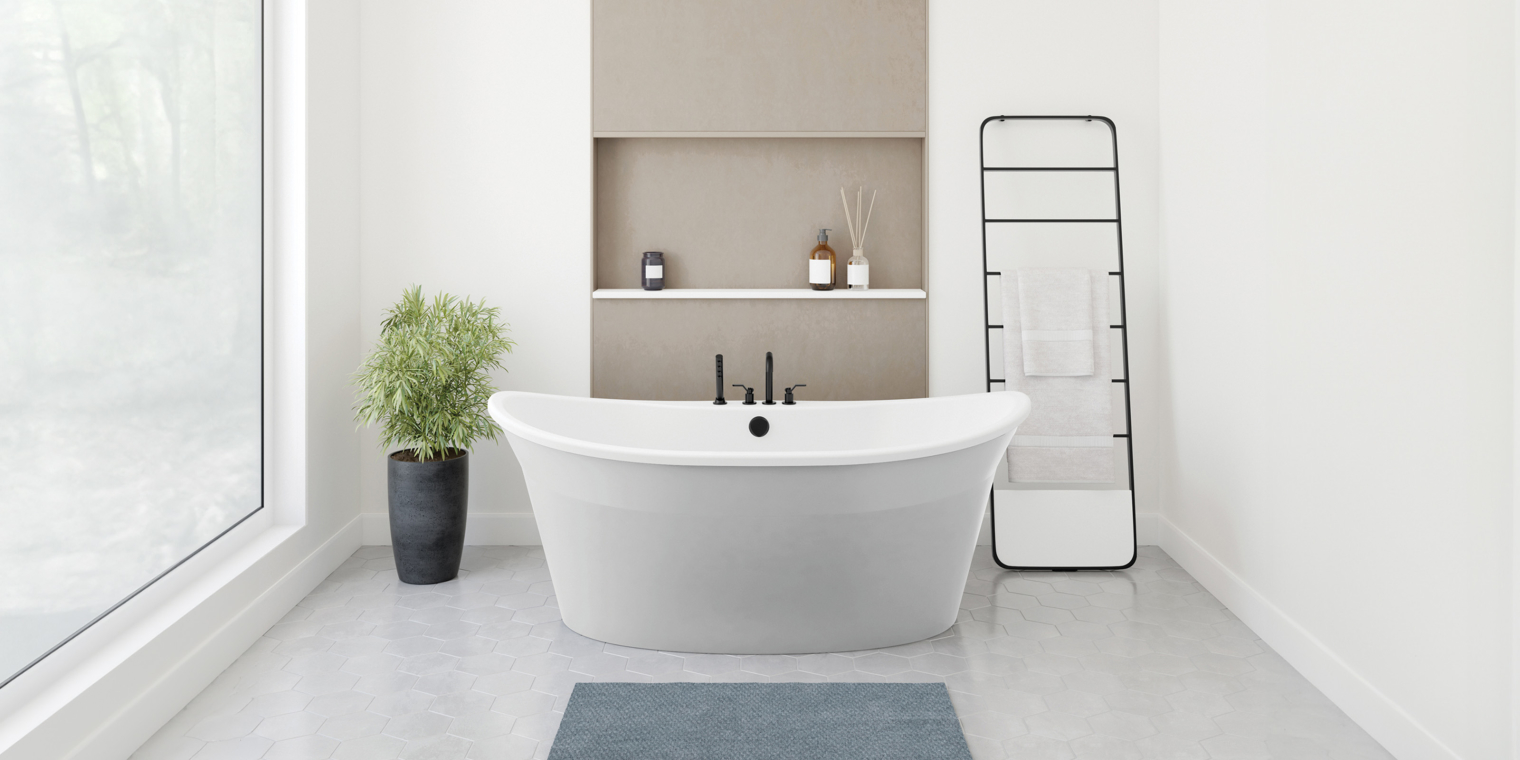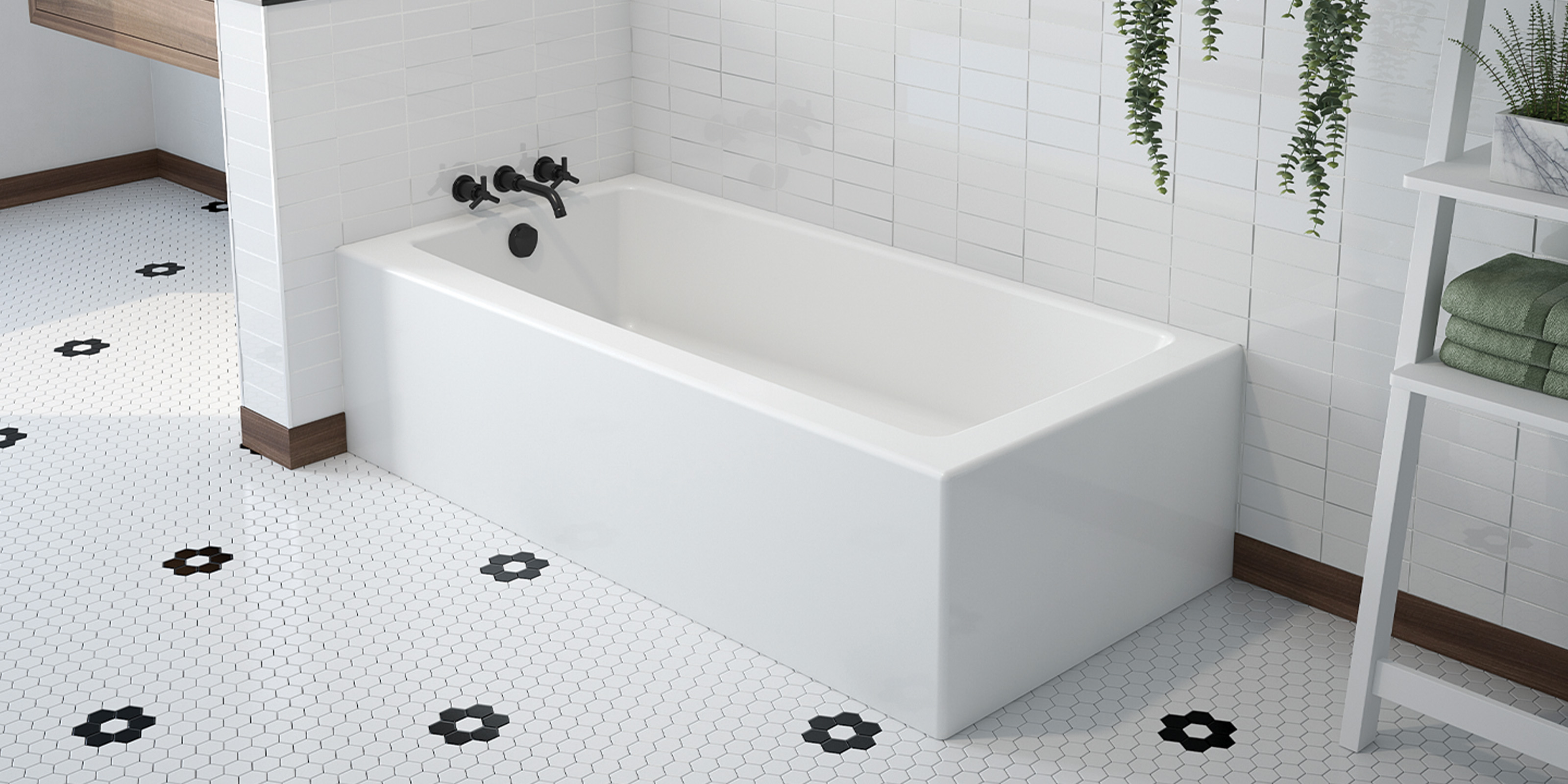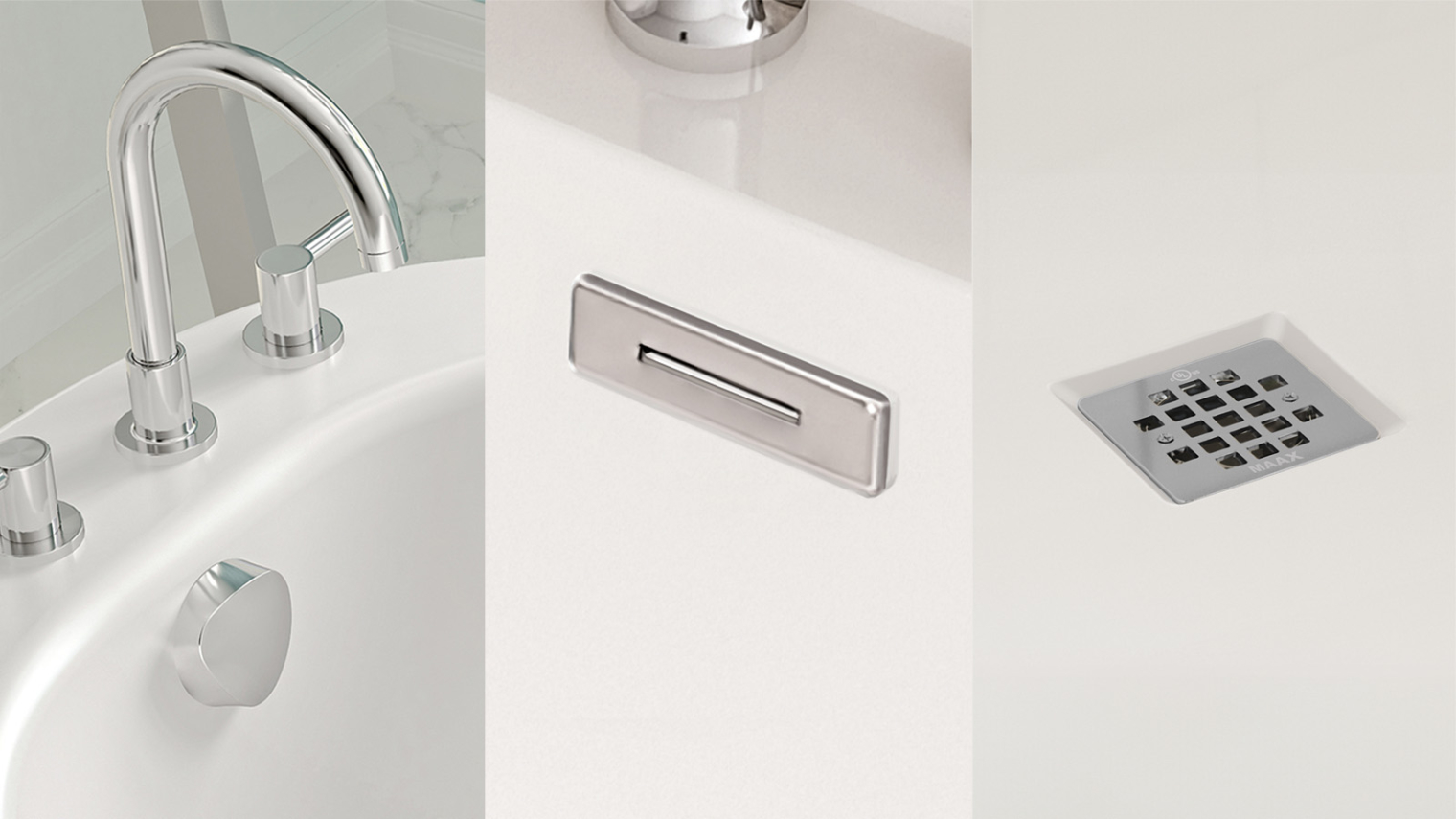Bathtubs Shopping Guide
Use our MAAX bathtub shopping guide to design your perfect bath experience. Installation types, materials, features, and much more are all covered here!
Use our MAAX bathtub shopping guide to design your perfect bath experience. Installation types, materials, features, and much more are all covered here!

Our step-by-step guide will provide you with helpful tips and give you an overview of the various constraints to consider when remodeling your bathroom.
When starting your measurements, ensure at least 5’ of accessible sides and 3’ of clearance space around your bathtub.
Step 1: If installing the bathtub into an alcove, measure the length from wall to wall(1). Keep in mind that the average alcove bathtub is usually 60” long. Deduct at least one inch from each wall from your measurement for undermount or drop-in baths so the rim can comfortably fit within the frame.
(1)Note: Bathtubs are typically installed to the bare studs. If you are measuring to replace an existing bathtub and have finished walls in place, you must account for wallboard thickness and enclosure thickness. Adding ½” - ¾” to both sides of your measurement (wall tiles tend to be thicker than shower panels) should get you closer to the size needed. The most common sizes are 60”, 66”, and 72.
Step 2: Measure from the front to the back wall and add ½” - ¾” if measuring against a finished wall. The standard bathtub width is usually 30" or 32". To enter and exit the tub comfortably, it is best practice to have a clearance space alongside the bathtub of at least 60" L by 30" W.
Step 3: A standard bathtub height is 15" - 16". Determining bathtub height relative to the floor will allow you to consider a comfortable step-over height to enter the tub. Who will use the bathtub? Is it practical for long-term safe use?
Soaking Depth of Your Bathtub: The soaking depth is taken from the top of the drain to the bottom of the overflow; this is how deep you will submerge. An average bathtub will have a depth of 12”. For a comfortable soak, opt for a depth of at least 14” or more.
Water Capacity: Please look at the technical specifications section on the product page to find the bathtub's capacity in gallons. The standard capacity of a bathtub is typically 40-50 gallons. Please ensure your water heater can accommodate this volume.
The Bathing Well: You can consider interior basin measurements while shopping once you are armed with information about the outside dimensions. Check the technical specifications for the bathing well dimensions; this is the bottom of the bathtub’s length and width. Will it fit your body comfortably? Do you prefer a reclined backrest for long soaks?
Weight: Consider the bath's weight while filled and occupied to determine if your current floor will support any added load. Additional bracing may be required.

The choice comes down to this: some consider freestanding tubs more of a showpiece and a design statement. They tend to be equated with a higher-end look and allow you to create a spa-like bathing retreat. Freestanding tubs are not necessarily as large as they once were; various sizes are now available on the market. If, for example, you have limited space to work with, you can get a smaller model that measures up to 60” in width, which will fit nicely in the space left by an older podium or alcove bathtub. Make sure the interior space of your freestanding bathtub is large enough to suit your needs – consider your height, weight, and intended use for the bathtub.

If your goal is to replace or install a corner bathtub, this paragraph is just what you need. There are plenty of benefits to corner bathtubs. Corner bathtubs are attractive and a great way to make the most of your bathroom's space. It doesn't matter how large or small your bathroom is. Adding a good-looking bathtub in an underused corner will maximize the square footage of your bathroom while blending style. When corner bathtubs are placed throughout a bathroom, traffic can flow freely, giving standing people and people sitting at dressing tables more room.
Establishing a budget upfront can help narrow down your options and prevent overspending. Determine how much you're willing to invest in your new bathtub, including installation costs, and stick to it throughout the shopping process.
Create your own stylish oasis and maximize your bathroom space with one of our tub showers. Enjoy the best of both worlds with products that combine the pros of a bathtub and a shower, all while saving on bathing space!
Take a look at the basic features of your bathtub.
1. Deck Space For Faucet
Some tubs have holes on the rim for a faucet, while others need a wall or floor installation. The faucet location mostly depends on the type of bathtub installed.
2. Waste And Overflow
The hole near the upper part of the bathtub connected to the drain prevents water from overflowing and often includes a trip lever to control the bathtub drain along with decorative trim.
3. Drain
At the bottom of the bath, the drain is a hole facilitating water evacuation toward the drain pipe. If a trip lever is not installed with waste and overflow, a stopper or pop-up-style drain can be used.
